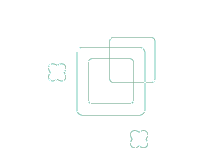| "As an artist from a non-western background, I feel that my position is similar to that of a pendulum. On one hand, the question is how do we extend and develop our own cultural identity as it faces the challenges of a new era. On the other hand, while we work and live in the western system, naturally and inadvertently the western issues become our issues. These two concerns come from different perspectives; they sometimes oppose each other, sometimes overlap. As we sway over to one side of the spectrum, the opposing force pulls us stronger to the other side, causing a constant oscillation between pondering and stability. This ponderous swaying is characteristic of the eastern artist working in the west." | |
 |
Whether he is extending the Great Wall of China by 10,000 meters of fire and light leading into the desert, recontextualizing Chinese Social Realist figures at the Venice Biennale, arranging a museum space with massive limestone boulders and Jacuzzi placed according to the traditional principles of feng shui, or using gunpowder as a medium with ground as the canvas, Cai Guo-Qiang makes physical, conceptual and spiritual gestures on a grand scale. Beginning with the recognition of the interrelatedness of all things, he employs poetic imagery, theoretical rigor, and visceral processes and moves freely between East and West and micro and macro experience in the attempt to create nothing less than a bridge between global and local, and inner and outer worlds. |
|
| "Jet lag is a valuable experience. It disrupts your sleeping schedule, and makes you tired and sleepy at all times of the day. This mute state in the mind takes us back to when we were children. Especially when we are on a plane, swaying back and forth with the rumbling of the plane's engine, it's as if we are back in the swaying of the crib. As our bodies are in transit, our minds can harvest. Because up in the air, our gravity is different from that on earth, and flying across time and date lines, we are in a state of chaos both in time and physical experience. In this state, many things that were not clear to us, can be all of a sudden clear as day. And many fresh new ideas may pop up." |
| Born
1957, Quanzhou City, Fujian Province, China Lives in New York City since 1995 1981-85 Department of Stage Design, Shanghai Drama Institute |
| 2000 | Project for Projects, Fondation Cartier pour l' art Contemporain, Paris, France | |
| 1999 | I Am the Y2K Bug, Kunsthalle Wien, Vienna, Austria | |
| 1998 | No Construction, No Destruction: Bombing the Taiwan Museum of Art, Taiwan Museum of Art, Taichung, Taiwan | |
| 1997 |
Cultural
Melting Bath: Projects for the 20th Century, Queens Museum of Art,
New York |
|
| 2000 | Open
End – MoMA 2000, Museum of Modern Art, New York Sharing Exoticism, 5th Lyon Biennale of Contemporary Art, Lyon, France Biennale of Sydney 2000, Art Gallery of New South Wales, Sydney, Australia 2000 Biennial Exhibition, Whitney Museum of American Art, New York Outbound, Houston Contemporary Arts Museum, Houston |
|
| 1999 | Art-Worlds in Dialogue, Museum Ludwig, Cologne, Germany; Aperto over All, 48th Venice Biennial, Italy | |
| 1998 | Taipei Biennial, 'Site of Desire,' Taipei Fine Arts Museum, Taipei, Taiwan Wounds: Between Democracy and Redemption in Contemporary Art, Moderna Museet, Stockholm, Sweden | |
| 1995 | The Venice Biennial International Prize—Golden Lion, 48th Venice Biennial, Italy | |
| 1995 | Benesse
Prize of Transculture Exhibition, 46th Venice Biennial, Italy Japan Cultural Design Prize, Tokyo, Japan |
|
| 2001 | Cai Guo-Qiang. London: Thames & Hudson and Fondation Cartier pour l'art Contemporain | |
| 2000 | I Am the Y2K Bug. Vienna: Kunsthalle Wien | |